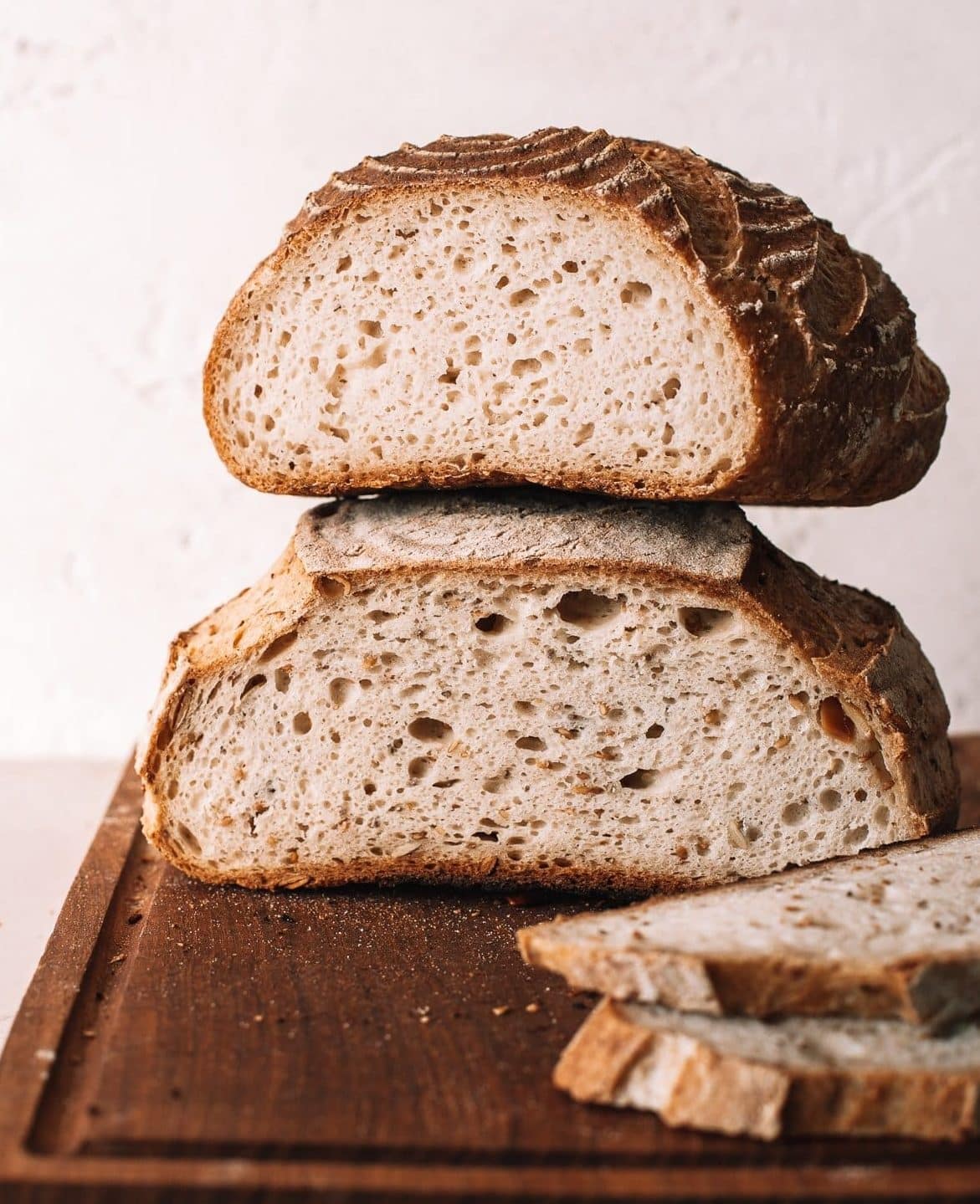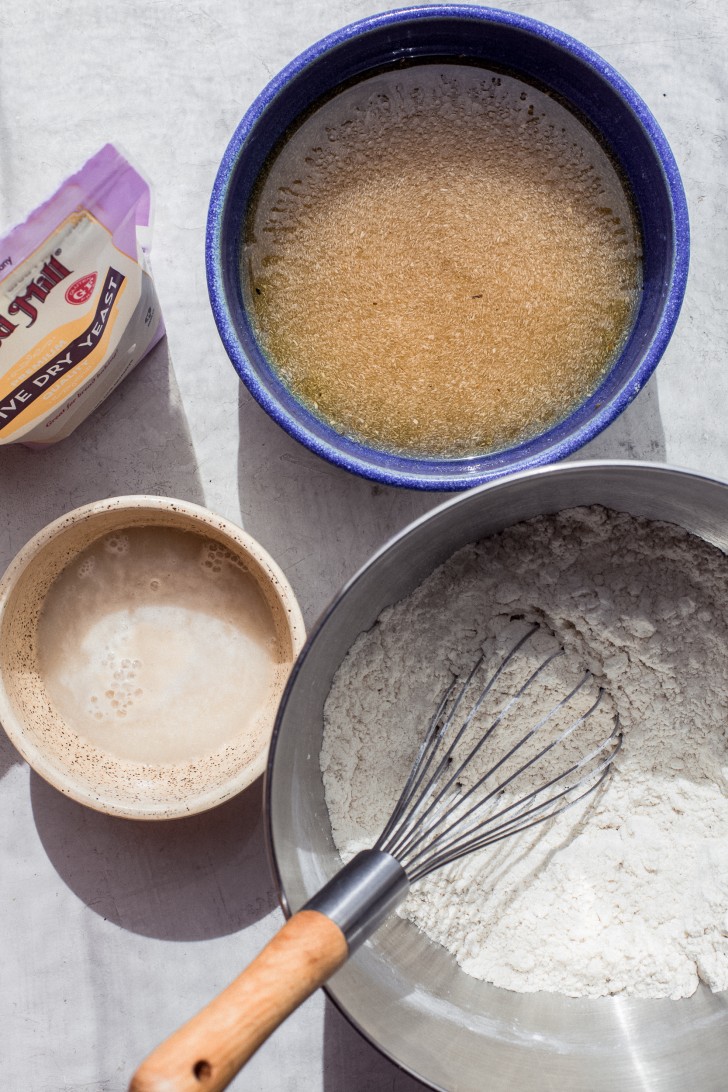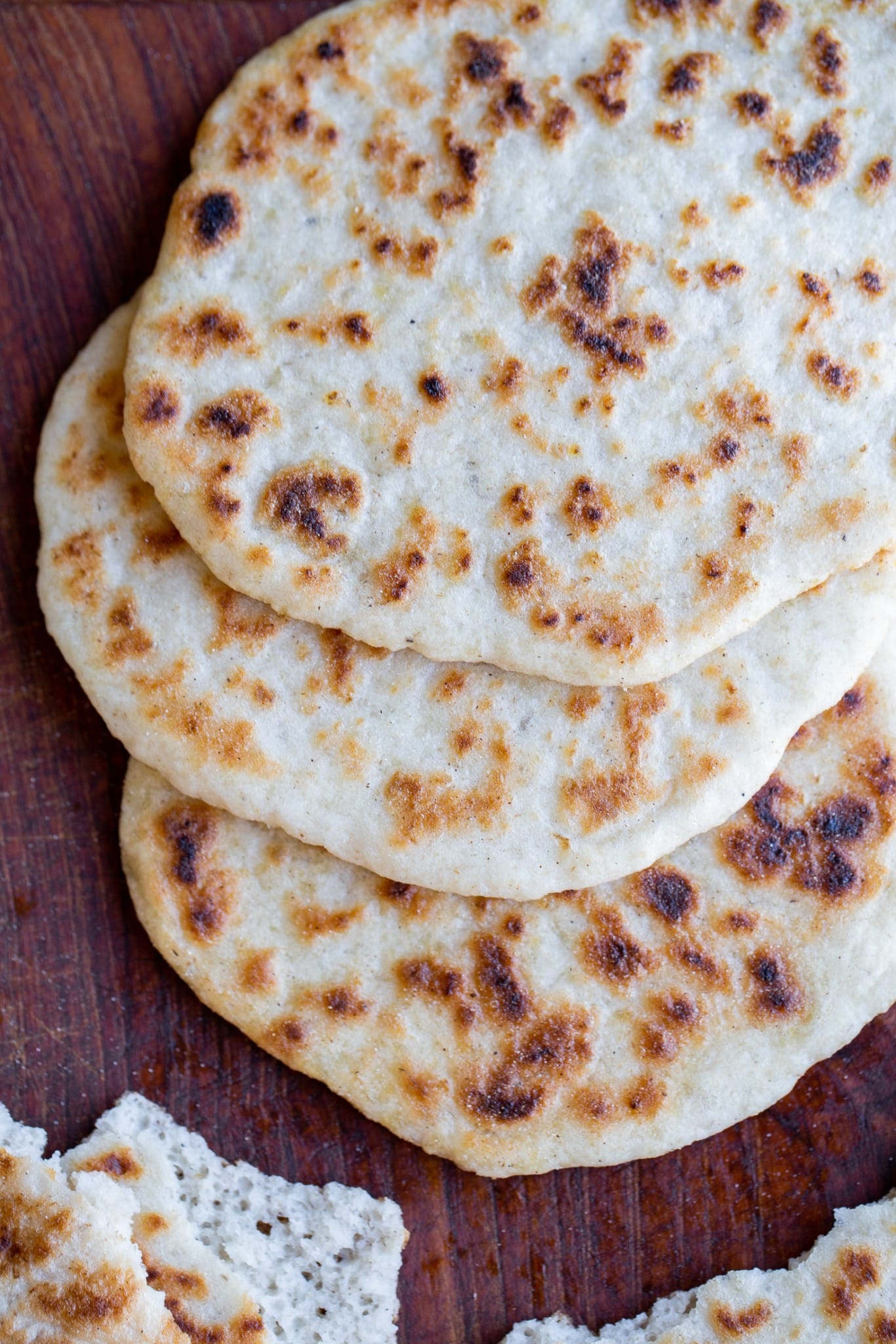What is Psyllium Husk? All about the Gluten-Free Binder!
Learn about the basics of using psyllium husk with this easy-to-understand guide to salt for gluten-free bakers. I break down the why and how we use psyllium husk for gluten-free baking, why psyllium husk powder is different than the whole husk, and more, so that you can make the best gluten-free breads and baked goods possible!

Let’s get right into it: what is psyllium husk?
Psyllium is a form of fiber that is derived from the husks of the Plantago ovate (plantain plant) seeds. It has a lot of health and digestive benefits, but it’s the gelling, fiber-filled aspects of the plant that we’re after here! Psyllium is often used as a digestive support supplement (in products like Metamucil) because it can help increase regularity for those with digestive issues. In this post, though, we’re discussing the ways psyllium husk can be used as a binder for gluten-free bread and other gluten-free baked goods.
Why do we need psyllium to make gluten-free bread?
When making gluten-free breads, flatbreads, etc., Psyllium husk acts similarly to the way gluten would act in traditional wheat bread. It provides the binding properties and elasticity that helps the dough become workable. It gives the structure and support for the bread to rise, as well.
From my experiments: you need psyllium husk for good gluten-free bread. For my gluten-free bread recipes, I wouldn’t try to replace it. Psyllium helps make the dough kneadable and workable, so it doesn’t squish and stick all over the place. It allows you to knead, shape, and manipulate your dough similarly to a gluten bread dough. It’s also what makes your bread chewy and stretchy.
Psyllium husk vs. psyllium husk powder
Psyllium husk and psyllium husk powder are the same product. The only difference is that one has been run through a grinder of some sort to turn it into a powder! Psyllium husk powder is finer, so it has more surface area to help absorb water. You generally need less of it than whole psyllium husk.
For my bread recipes, you want the full husk, as that’s how I’ve tested my recipes. You can generally find it more easily anyways! I usually find it in the supplement area of most grocery stores. See below for how to replace psyllium husk with psyllium husk powder.
How to replace psyllium husk with psyllium husk powder
While these are technically the same ingredient, the difference in their fineness means you’ll need to use less of the psyllium husk powder if you’re using it in place of the whole husk.
To replace whole psyllium husk with psyllium husk powder, use 80% of the amount called for. For example, if the recipe calls for 20g whole psyllium husk, you’d use 16g psyllium husk powder in it’s place.
Why does psyllium husk make my bread turn purple?
Psyllium husk contains an antioxidant in the outer layer of the psyllium husk seed called anthocyanin that can turn your bread or other baked good purple if too much of the powder is used.
This is often only an issue when you’re using psyllium husk powder. I use the whole husk, and have never had this happen to me.
To mitigate your bread or baked goods turning purple when using psyllium husk powder, you can add lactic acid (about 1/4 teaspoon per tablespoon of psyllium husk powder) or lemon juice (equal amount of the psyllium husk powder – reduce the liquid in your recipe accordingly). The acid in these ingredients helps to mitigate the purple color by bleaching it slightly. However, they also may change the flavor of the recipe. This is why I prefer to use the whole psyllium husk and avoid this issue entirely!
What is the best psyllium husk to use for baking?
It depends what your recipe calls for, if you’re deciding between psyllium husk and psyllium husk powder! I recommend going with whatever type the recipe author specifies for the best results, as that’s the way the recipe will have been tested.
If you only have one or the other, use the guide above to substitute one for the other.
What are the best psyllium brands?
My go-to psyllium husk brands are NOW Foods, Organic India, and Anthony’s. I’ve used all of these in my recipes with success. I’ve been able to find NOW & Organic India psyllium husk in local grocery stores, typically in the supplement section with other digestive support supplements.
Psyllium Husk
 Buy Now →
Buy Now →
 Buy Now →
Buy Now →
Are there any psyllium husk substitutes in gluten-free bread recipes?
I recommend sticking with psyllium husk instead of trying to substitute for it. It’s relatively inexpensive and you won’t use a ton for each loaf, so it should last you a decent amount of time, depending on how often you’re making gluten-free bread!
Note: I haven’t experimented with it yet, but people have said that acacia fiber can be a decent substitute for psyllium. However, all my recipes for bread are pretty reliant on psyllium for it’s ability to make the dough workable and the bread chewy and well-textured.

How to use psyllium husk:
In most recipes, you’ll whisk psyllium husk with water to create a psyllium gel. It will thicken up almost immediately, and get progressively more thick over the next 5 to 10 minutes, until it’s pretty firm and gel-like. You can see the gel above in the blue bowl.
Some recipes call for the psyllium to be whisked into the dry ingredients, so make sure to read your recipe carefully to see which method your recipe calls for. When you’re using this method, you’ll usually need to let the dough or batter rest for a little while to let the psyllium thicken everything up.



What to make with your new knowledge:
Now that you’re a psyllium husk expert, I bet you’re excited to use it! Here are my favorite gluten-free bread recipes that use psyllium husk —
- Homemade Gluten-Free Bread
- The BEST Gluten-Free Pizza Crust
- Gluten-Free Flatbreads/Naan
- Fluffy Gluten-Free Focaccia
- Gluten-Free Sourdough Bread
- Gluten-Free Cinnamon Raisin Bread
- Crispy Gluten-Free Sourdough Discard Crackers
You can see ALL of my gluten-free bread recipes here!


Is plain Metamucil the same thing as psyllium husk powder?
If the only ingredient is psyllium, it should work!
Is psyllium seed just as good as the husk in gf baking recipes?
Hi Nicole, I never used psyllium seek but it would definitely add texture. The husk is a different part of the seed (the outside of it) and that’s the only part I’ve ever recipe tested with. After reading about it, it seems like psyllium seed needs to be soaked for 2-6 hours or so to become digestible, so it would probably be annoying to use in recipes, because it would take so long!
I found that when I mix the psyllium with water that it gels so much it doesn’t incorporate into the bread dough very well and leaves little dark lumps. Should I mix it and put it in right away or mix it in my vitamix and then add it to the mix? Might be hard to clean out of the blender though.
Hi Loretta, are you using psyllium powder? I don’t work with psyllium powder because I find it gets very lumpy – bakers who recommend this usually suggest mixing the psyllium with the dry ingredients and letting the dough rest for a bit to absorb the extra liquid.
I am new at gluten free baking and I am confused if xanthan gum and psyllium husk have the same use. I have been using Bob’s Mill 1:1 gluten free flour mix which contains xanthan gum. For your recipes, do I omit the psyllium husk since there is xanthan gum in my mix or no? Google has not been particularly helpful! Thank you!
Hi Haley, xantham gum and psyllium husk are both binders but perform different. I don’t recommend using bread mixes that contain xantham gum in recipes that call for psyllium husk, because the binders together will make things gummy. My recipes are developed specifically for the flours called for, and using a 1:1 mix won’t yield as good of a result! Hope this helps clarify.
Hello! I am excited to try some of your recipes, and just have a little question: do you find psyllium husk leaves a slightly bitter aftertaste? I made a gluten free bread with psyllium husk, but found it to be a bit bitter and I’m wondering how to mitigate that.
Hi Wendy, I have never had psyllium husk taste bitter but sometimes flours can be on the bitter side, especially if they’ve gone rancid!